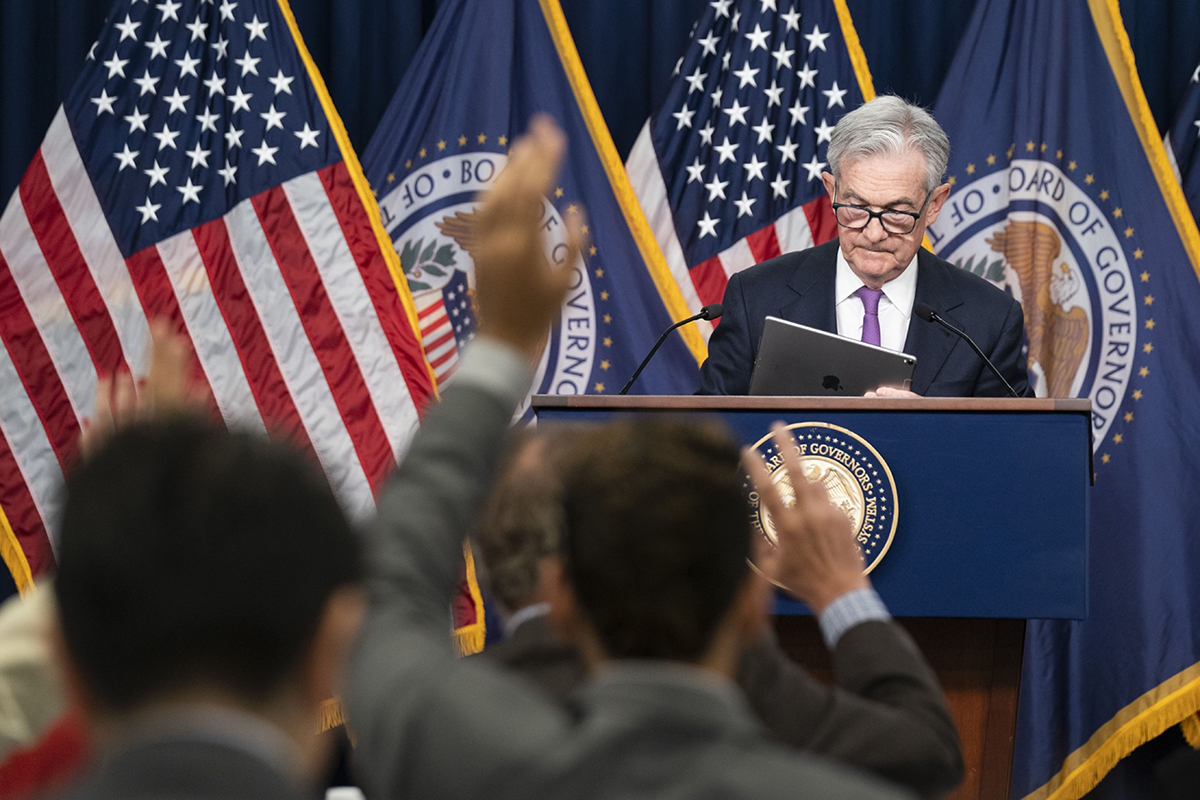 Federal Reserve Chair Jerome Powell
Federal Reserve Chair Jerome Powell
The Federal Reserve's preferred gauge of underlying inflation cooled last month, while household spending rebounded.
The so-called core personal consumption expenditures (PCE) price index, which strips out the volatile food and energy components, increased 0.3 percent from the prior month, data out Friday showed. That followed a 0.5 percent reading in January, marking the biggest back-to-back gain in a year.
Recommended For You
Fed officials may nonetheless take comfort in a tame increase in a narrower gauge of services inflation within the report. At the same time, inflation-adjusted consumer spending exceeded all estimates on the heels of the biggest gain in wages in over a year, according to the report from the Bureau of Economic Analysis (BEA).

The cooler inflation reading is a welcome reprieve after other measures showed price pressures intensified at the start of the year. Even so, Fed officials are looking for more evidence that inflation is sustainably on a downward trend, and in the meantime, they're not rushing to cut interest rates.
Chair Jerome Powell said the figures were "pretty much in line with our expectations" and reiterated that the central bank doesn't need to rush to cut interest rates. Policymakers will have access to one more PCE report, in addition to other data on consumer and producer prices, as well as employment, before their next meeting starts on April 30.
Officials pay close attention to services inflation excluding housing and energy, which tends to be more sticky. That metric stepped down to 0.2 percent from a month ago, after a 0.7 percent surge in January, according to the BEA. Healthcare and financial services registered much smaller increases than in the prior month.
| Metric | Actual | Estimate |
|---|---|---|
| PCE price index (month-over-month) | +0.3% | +0.4% |
| Core PCE price index (month-over-month) | +0.3% | +0.3% |
| PCE price index (year-over-year) | +2.5% | +2.5% |
| Core PCE price index (year-over-year) | +2.8% | +2.8% |
| Real consumer spending (month-over-month) | +0.4% | +0.1% |
A still-robust labor market has so far supported household demand, despite high borrowing costs, fewer job postings, and persistent inflation. Services spending surged by the most since July 2021, bolstered by international travel, transportation, and financial services. Goods outlays, meanwhile, edged up after a steep drop in the prior month and helped by auto sales.
"We really just haven't seen that consumer fatigue that we were getting some hints of in the last month's data," said Sarah House, senior economist at Wells Fargo & Co. "That's going to make it really hard, I think, for businesses to hold the line on prices if consumers are still willing to splash out at these levels."
What Bloomberg Economists Say…
"We think a cooling labor market in coming months, and a further slowing of personal income growth, will result in slower spending growth overall. We continue to believe the Fed is on track for a June rate cut as economic conditions soften."
— Stuart Paul & Estelle Ou
Separate data out Thursday showed consumer spending was revised higher at the end of last year on the back of stronger outlays for healthcare and financial services, even as goods spending was weaker than originally estimated. Fourth-quarter core PCE inflation was also revised slightly lower in that report.
While overall incomes moderated, due in part to weaker dividend payments, a narrower measure of earnings known as wages and salaries advanced 0.8 percent, the most since the start of last year.
The saving rate fell to the lowest since the end of 2022, possibly indicating that people are dipping into savings to support spending.
© Touchpoint Markets, All Rights Reserved. Request academic re-use from www.copyright.com. All other uses, submit a request to [email protected]. For more inforrmation visit Asset & Logo Licensing.



